Paradigm of Perfection – Inaba’s Ceramics
Chica Inaba’s beautiful ceramics exhibit both strength and gentleness through a myriad of changes in shape. Her ceramics are versatile in usage while at the same time artistic expressions. Chica unites the essential elements of nature, vitality and fragility, into creating her ceramics. Strong white lines accentuate tender dark shadows not only enhancing visual effect but also focusing peoples’ awareness of the delicate strength of nature. It takes an artist’s sensitivity, diligence, and imagination to create such alluring and powerful vessels.
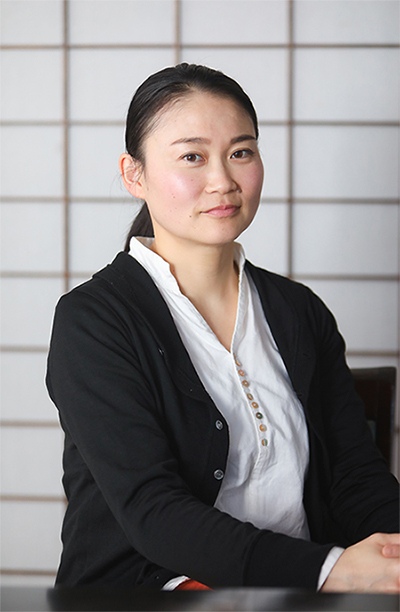
Furthermore, according to Chica, ceramics are not just for practicality; they can hold different ideas and cultures. With this notion, Chica adds another invisible dimension inside her ceramic vessels and thus creates a paradigm of uniqueness and perfection. This extra element is the pinnacle of her work which provides endless possibilities for wisdom and appreciation.
We are honored to be able to interview Chica and learn the philosophy and techniques that China has employed to create her one-of-kind ceramics. In the interview below, Chica talks about her “dead leaf” vessel and the meaning it conveys. Her in-depth view demonstrates an insightful interpretation of nature.

Q: Your ceramics are so elegant and delicate. Please share with us your story of becoming an outstanding ceramic artist in Japan.
A: I have always liked to play outdoors, but at the same time, I also like to stay home writing and painting. When I was about 14 years old, I vaguely realized that I would need to eat for the rest of my life. This was also my first experience of crafting vessels with my own hands. In the course of “Handicraft” at high school, I had the opportunity to use various materials, such as woodwork, lacquer, leather, and painting, but I was most interested in ceramics and wanted to continue learning.
After I completed ceramics courses at Musashino Art University I became addicted to working on [vessels], and after graduation, I spent about 3 years studying in Japan, Europe, and other places. Then I went to the Tajimi City Ceramic Design Institute. Over there, I not only learned how to use clay to make vessels but also understood in-depth the relationship between soil and ceramic making. At the same time, I was inspired and influenced by my classmates who were full of passion for ceramic art.
During the next ten years, I was mainly engaged in making ceramic vessels. However, I had never stopped thinking that vessels can not only store food and flowers but also connect people and accept their feelings and thoughts. Then, I went to Taiwan and met lotus leaves.
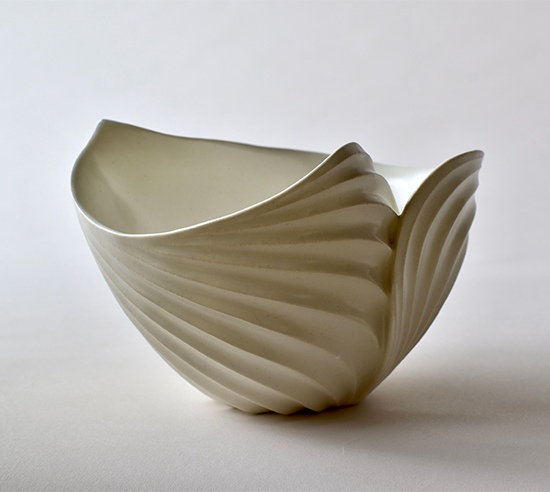
While staying in Taiwan for three months, I visited many lotus ponds. I observed lotus flowers blooming and lotus leaves swaying in the breeze. They were really beautiful, so lotus flowers became the main theme of my ceramics. As time went on, after the blooms, the flowers would fall and leaves would turn brown while the leaves would roll up. The withered leaves look like a grandmother’s hand gently accepting the passage of time. This tolerance/acceptance is the essence of nature. I firmly believe that the modeling of clay has also left a deep impression on me, and from then on I started to create ceramics with the theme of dead leaves.
In order to create a vessel [not only able to hold things but also to accept thoughts], I have applied more freestyle in designs. Of course, my design would first and foremost be for practical use in the first place. However, I have further integrated the dead leaves motif into my creations. As a result, my designs change little by little over time. In recent years, my ceramic work has changed into sculptures, but I think it’s still changing. Of course, I will continue to create functional vessels using the dead leaf motif.
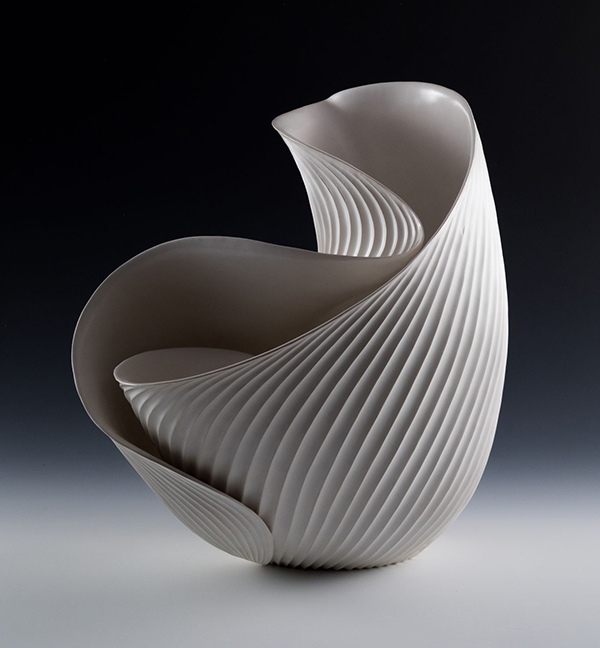
Q: You seem to favor the color white. Is there a reason for that?
A: In my work, I think the color white emphasizes fluidity which is accomplished by the spread and accumulation of the lines. White can also elegantly express shapes. Coupled with the shadow produced by ridges, white can strengthen the appearance of flexibility. Yes, the glaze I used has a soft effect. I like it because it has a softer look than reflective white which can be seen in many other ceramic works.
In addition to my creations, I am also attracted by others’ works that are white. Such works are not limited to ceramics. When I see that the surface changes, thereby creating more depth or a broader sense, I become very receptive to the creator’s intended messages.
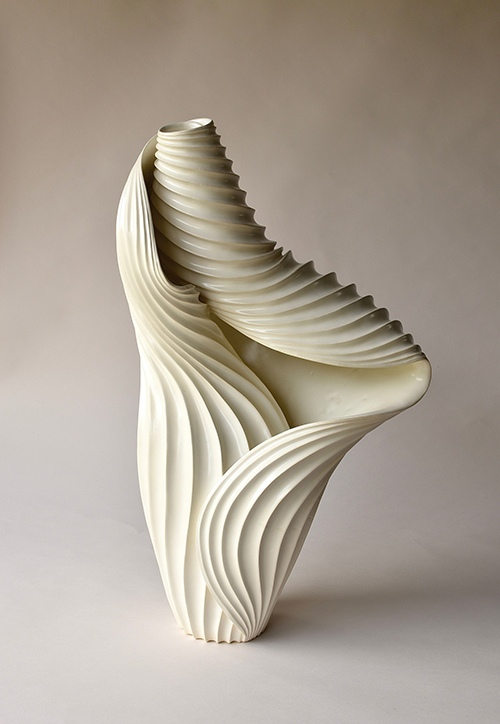
Q: What kind of materials do you use for making your ceramics and what kind of techniques do you use to make such beautiful spiral shapes?
A: I do not use any unusual materials or techniques. I will first visualize the design in my mind. Then I will use Mino clay to create strips to build the shape from the bottom by using a maquette (in this case a smooth surface). After that, I will follow the flow of curves to carve out the ridges. Since the indentation changes according to the line in terms of spacing and depth, the engraving and molding process must be very careful. After the piece is dry, I will coat it with a glaze and fire it in the kiln (oxidization) to complete the work.
Q: Are there any artists that have inspired you in your work?
A: Egon Schiele’s works possess lonely and decadent color tones with a strong questioning attitude that often fascinates me.
I appreciate Ito Keiji’s quiet works contrasted with strong and rough surfaces, as well as occasional glimpses of humor which allow softness and clarity to coexist. The inner meaning conveyed by him has moved me.

Q: It seems nature has been your major source of inspiration. Please share with us your favorite places to get inspiration.
A: Shapes created by nature usually leave me with a deep impression and inspire me greatly. As for location, I have no preferences. Instead, I will talk about my feelings toward dead leaves, because it is the “dead leaf” that has been my main source of inspiration.
Though all leaves look the same when they are alive, they exhibit different appearances when they wither. This is because their veins curl up when they die, both vitality and fragility appearing at the same time — enchanting and beautiful.
Withered leaves are like vessels “full” of vitality. A dead leaf filled with water lying on the ground symbolizes its preparation for rebirth or the suffering of its fate.
This piece [Leaf Vessel] of mine has a double meaning in its title. It not only has a leaf shape, but it can also hold water, plants, and other materials — it poses strong flexibility as a “vessel”. Since it is a vessel, it is intended to be able to accept different ideas and ideologies, such as different cultures.
*The title [Leaf Vessel] is read as [Yoki].

Q: What elements do you think aspiring artists should consider when making their ceramics?
A: The factors to consider are different for each individual and it’s hard to make a general statement.
What I always keep in mind is…..
I will observe the person whose artwork interests me, in order to deepen my understanding and feelings, trying to find out whether he or she has been applying different methods and techniques in his or her artistic expression. Moreover, whether he or she dares to accept challenges.
As for the material, I believe that we must respect the fact that when we bake clay dug from the ground, it is forever changed; that piece of clay will never return back to the soil and the deeper meaning associated with it.
Q: Do you have any fond experiences or stories you would like to share in making your ceramics?
A: I’ll never forget my first contact with the clay. I had a pleasant sensation from its cool touch, as well as the feelings of my own hands creating something concrete not to mention the joy of using this piece at home (though I remember that piece was not well made…).
I used to go to a senior home to provide guidance on how to make ceramics for about three years. During that period of time, many interesting stories took place. I will not give examples one by one here due to limited space, however, it is no exaggeration to say that I still remember how much fun they gained from modeling and working the clay and how they could create such unique pieces with unrestrained creativity. To this day, I still draw inspiration from that unforgettable experience.
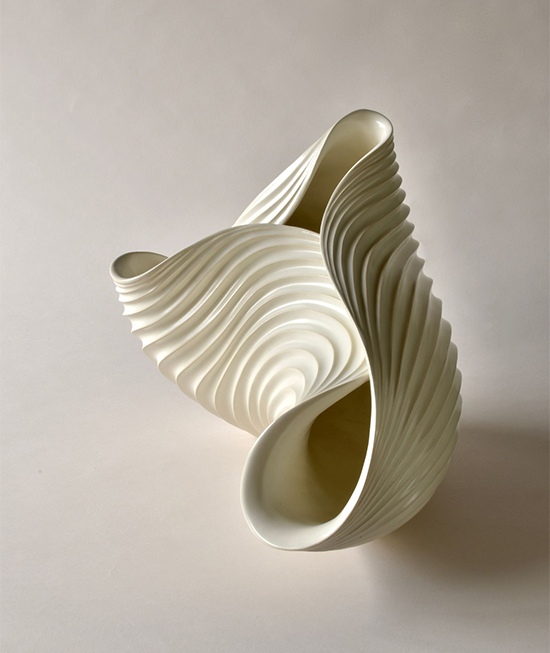
Q: Please tell us your product lines and where people can purchase your ceramics.
A: My works can be divided into three types: sculpture, vessel (tableware), and a combination of the two.
Sculpture: JOAN B MIRVISS LTD / New York, USA https://www.mirviss.com,
Contemporary Art Sokyo / Kyoto, Japan http://gallery-sokyo.jp
Tableware: Nishikawa Art Museum / Kyoto, Japan http://gallerynishikawajp.shopinfo.jp
Second Spice / Kyoto, Japan secondspice.com/secondspice_about.html
Combination of the two: Tosei Kyoto Gallery / Kyoto, Japan http://www.gallerytosei.com/kyoto/
Terra Delft Gallery / Delft, Netherlands https://www.terra-delft.nl/en,
LOES&REINIER INTERNATIONAL CERAMICS/Fenter https://loes-reinier.com
These are all permanent exhibitions. There are other opportunities to purchase my works, for example, Solo exhibitions and group exhibitions will be held soon. Other opportunities occur when I post on Instagram and Facebook.
My Instagram: inabachica, FB: Chica Inaba
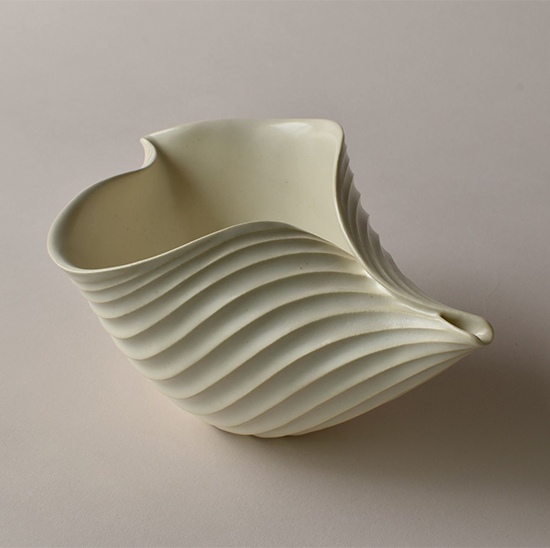
We appreciate Chica spending time answering our questions. Her words are powerful just like her ceramics. We hope you have gained a glimpse into her wisdom.
Chica’s Instagram